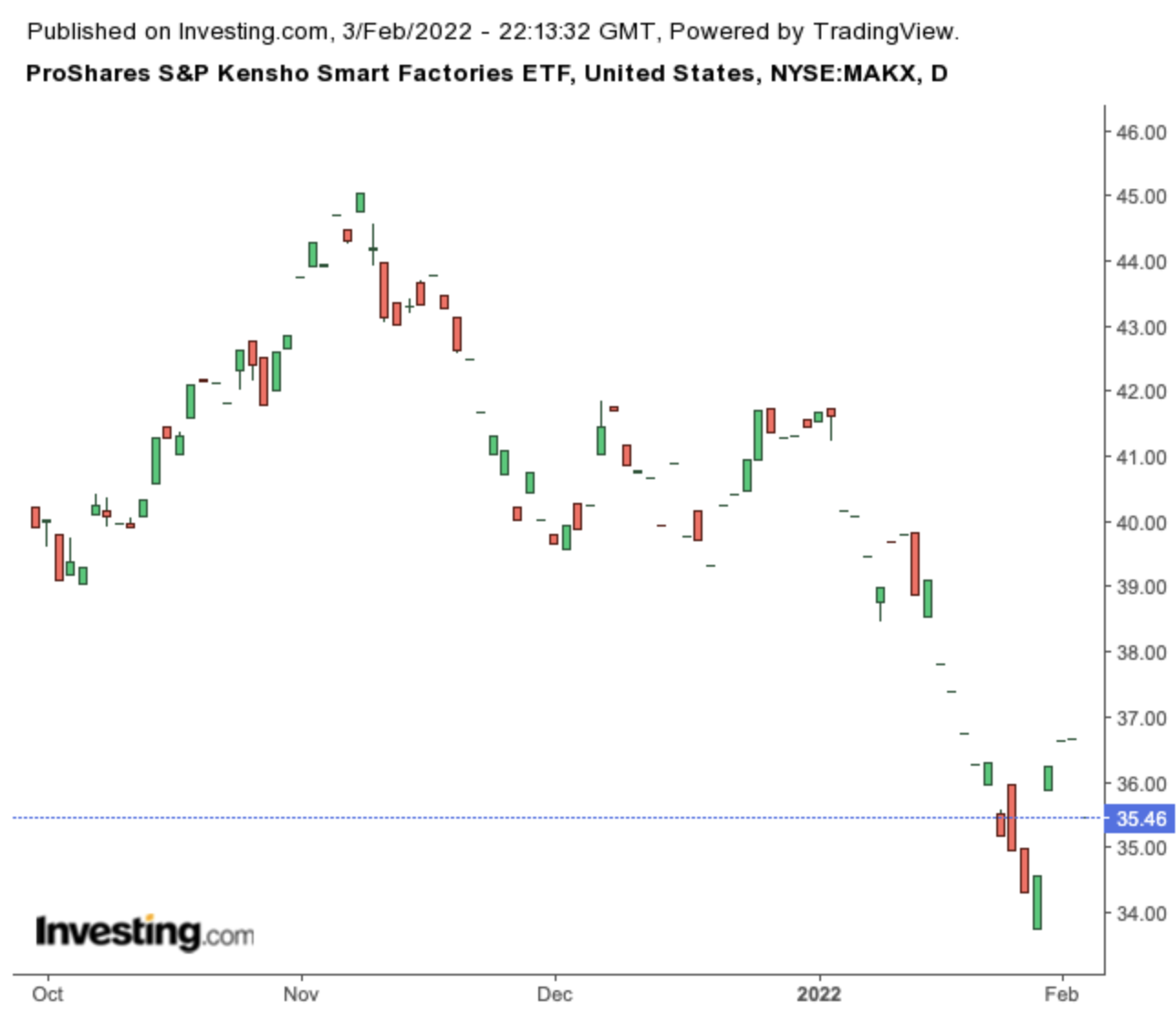Better-than-expected quarterly earnings from several heavyweights, such as Advanced Micro Devices (NASDAQ:AMD), Alphabet (NASDAQ:GOOGL), Amazon (NASDAQ:AMZN), Apple (NASDAQ:AAPL), Caterpillar (NYSE:CAT), Thermo Fisher Scientific (NYSE:TMO), and United Parcel Service (NYSE:UPS), meant a relief rally this week.
On the other hand, poor results from Meta Platforms (NASDAQ:FB), released on Feb. 2, and PayPal (NASDAQ:PYPL), announced on Feb. 1 as well as disappointing metrics from Goldman Sachs (NYSE:GS) and Netflix (NASDAQ:NFLX) in January spooked a large number of investors.
Seasoned investors realize that changing sentiment could lead to wild price swings on Wall Street, and broader indices may not yet be out of the woods.
Since the start of the year, the Dow Jones Industrial Average and the tech-heavy NASDAQ 100 index have lost around 3.4% and 11.1%. Despite these declines, established companies, such as large-caps with earnings growth, wide moats, dividends, as well as those that offer solid technology should continue to attract investors in future months. Therefore, today’s article introduces two exchange-traded funds (ETFs) that could appeal to readers who are ready to buy the dip.
1. SPDR Dow Jones Industrial Average ETF
- Current Price: $350.98
- 52-week Range: $305.18 - $369.50
- Dividend Yield: 1.67%
- Expense Ratio: 0.16% per year
Our first fund, the SPDR Dow Jones Industrial Average ETF Trust (NYSE:DIA), tracks the returns of DJIA, made up of 30 blue-chip US companies listed on the New York Stock Exchange (NYSE) as well as the NASDAQ. The DIA ETF is one of the largest and most widely-followed funds.

DIA started trading in January 1998, and net assets stand at $32.2 billion. Since the Dow Jones index is price-weighted, higher-priced shares have a significant impact on the value of the ETF.
The fund’s top 10 holdings currently comprise approximately 55% of the portfolio. Top spots in DIA are held by UnitedHealth (NYSE:UNH), Home Depot (NYSE:HD), Goldman Sachs, Microsoft (NASDAQ:MSFT), McDonald’s (NYSE:MCD), and Visa (NYSE:V).
In 2021, DIA was up over 19%. It started 2022 at $365 and after hitting a record high in the first week of January, the companies in the index came under pressure, so it is down about 2% year-to-date.
Given the blue-chip names in the fund, we expect most of them to recover from their January lows to make new highs in the coming quarters. Therefore, buy-and-hold investors could consider adding DIA to their portfolios around current levels.
Finally, investors might also want to research the Invesco Dow Jones Industrial Average Dividend ETF (NYSE:DJD), a dividend-focused Dow fund.
2. ProShares S&P Kensho Smart Factories ETF
- Current Price: $35.46
- 52-week Range: $33.74 - $45.05
- Expense Ratio: 0.58% per year
Complex supply chain issues, as well as increased digitalization, are providing tailwinds for smart factories, or, according to Ottomotors.com, “highly digitalized and connected environment[s] where machinery and equipment are able to improve processes through automation and self-optimization.”
Recent metrics highlight that by 2028, the global market for smart factories could reach almost $600 billion, implying a compound annual growth rate (CAGR) of well over 12%. 'Digital' or 'intelligent' factory would also be other terms used in this context.
Our second fund, the ProShares S&P Kensho Smart Factories ETF (NYSE:MAKX), focuses on firms whose technologies enable digitalized factories to improve manufacturing processes. The fund was first listed in September 2021, and net assets stand at $3.7 million. Put another way, it is still a small ETF with limited trading history.

MAKX currently has 23 holdings, and the leading ten names account for over half of the portfolio. Almost three-quarters of the stocks are information technology (IT) names. Industrial stocks account for the remaining portion.
Software services provider PTC (NASDAQ:PTC); software and engineering group Emerson Electric (NYSE:EMR); electrification, robotics, and industrial automation specialist ABB (NYSE:ABB); and integrated asset optimization software developer Aspen Technology (NASDAQ:AZPN) are among the leading firms on the roster.
The ETF started trading in late September at around $40. Then on Nov. 8, it hit a record high of $45.05. But since then it has lost around 21%. Long-term investors could consider buying around $35.
